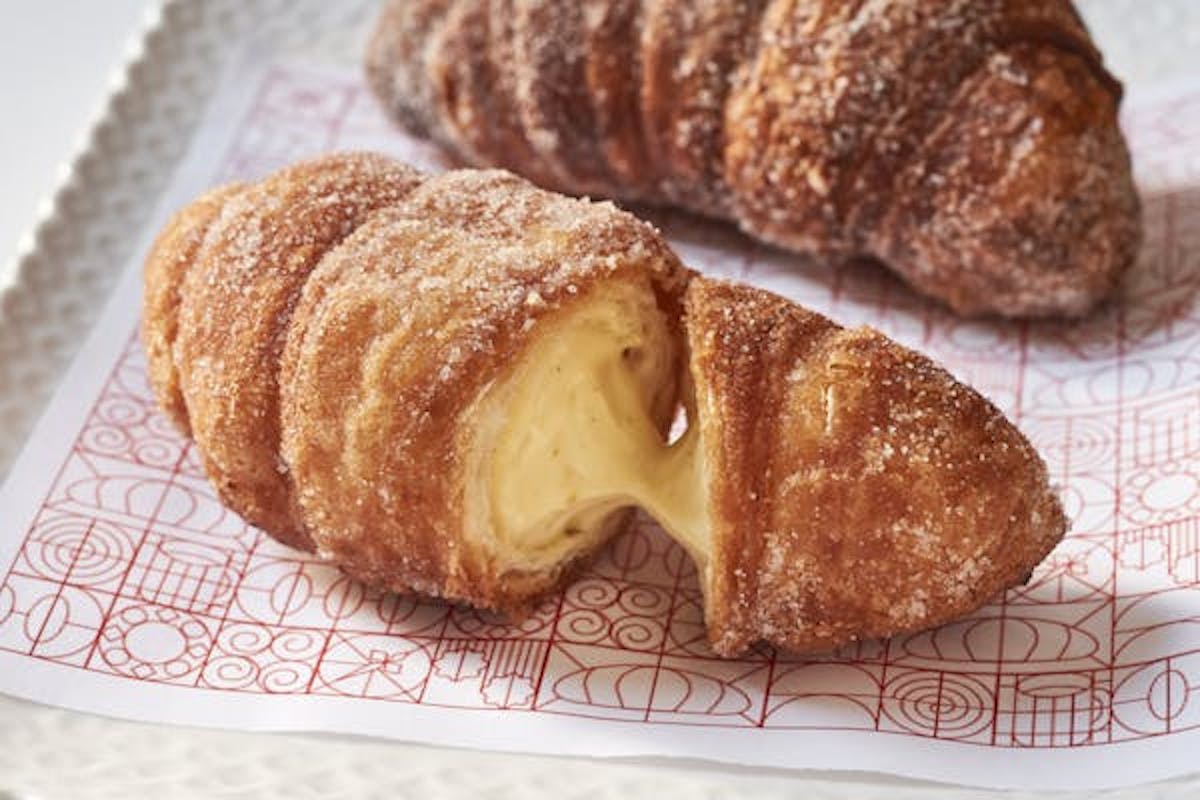Know Your Spanish Pastries

Chances are you’ve tried a cinnamon-dusted churro before, whether from a cart or at dessert at one of your favorite restaurants. But have you ever heard of xuixos? Or ensaïmadas? Both are staples in the Spanish pastry lexicon but may not be as well-known here in America.
Before you choose your next sweet, flaky treat at Mercado Little Spain, here’s a breakdown of all the flaky, buttery goodness.
Xuixos
Believe it or not, the once-trendy Cronut was not the first pastry mashup (not to discount their brilliance!). To put it plainly, a xuixo (pronounced “shoo shoo”) is a croissant-churro hybrid that’s filled with cream.
Here’s a little more explanation. The pastry was invented in the 1920s in the Catalonian city of Girona. Legend has it that a famous acrobat fell in love with a pastry chef’s daughter, and was caught in the bakery with the daughter by said pastry chef when he heard the acrobat sneeze (“shoo!”). The acrobat then gifted the pastry chef with the recipe for xuixos and promised to marry his daughter.
All sneezes aside, a xuixos are traditionally made by deep-frying a flaky dough filled with rich, thick crema catalana, then coating it in sugar for a crunchy exterior. At Mercado Little Spain, our pastry chef quadruple-folds the dough for extra oomph. Try one from our Bollería Menu!
Ensaïmadas
The island of Mallorca is known for its gorgeous beaches and its thriving nightlife, but it’s also known for a sweet, spiral-shaped pastry known as ensaïmada. The pastry’s origins are a little hazy, but it’s believed that the recipe was brought to the region by Arabs who occupied the region from the 8th to the 14th century.
“Saïm” is actually the Arab word for “lard,” so many traditional recipes use pork lard to make the flaky dough. Written recipes for the fluffy pastry first showed up in the 17th century, when it was served as a celebratory treat at parties.
Although sometimes ensaïmadas can be filled with jam, cream, or almond nougat, in their simplest form they’re made with an enriched dough that is smeared in lard, rises several times, and is dusted with powdered sugar after it’s baked.
Churros
What could be better than a cinnamon-and-sugar-dusted churro pulled right out of hot oil — so that it’s warm and crisp on the outside, and soft and creamy on the inside, its two textures adding up to the perfect bite? (Answer: nothing, really.)
The long, thin, cylindrical churro has reached a level of iconography on every level of dining, whether they’re served freshly fried from street carts or alongside multiple dipping sauces at high-end restaurants for dessert. During the COVID-19 pandemic, churros also became one of the top-searched recipes on the internet, a nod to their popularity and how much people were craving comforting foods.
Much like the other two pastries, the history of the churro is a matter of some debate: Some think the recipe may have been brought back to the Iberian peninsula by Portuguese sailors who discovered a similar pastry, the youtiao, in China. Others believe it was invented by Spanish shepherds who would eat churros while they were out and about in the mountains (the dough was easy to fry outside).
Regardless, the surprisingly simple pastry is made with a mix of flour, water, and salt. The dough is pressed through a chuterra, a tube with a star-shaped nozzle that gives the churro its signature prism shape. After being fried in hot oil, churros are typically dusted in sugar and served immediately.
Although churros are traditionally eaten for breakfast in Spain, you can enjoy them for dessert (with a side of hot chocolate for dipping, of course) at El Chiringuito, Spanish Diner, or La Barra at Mercado Little Spain!
